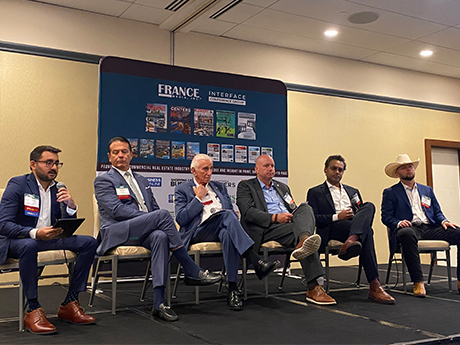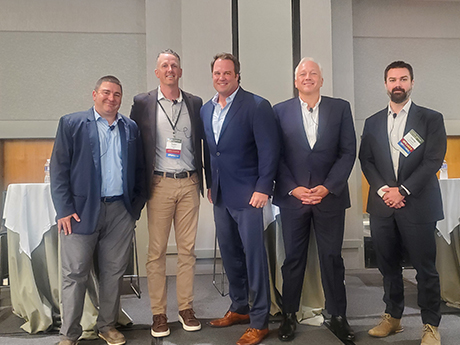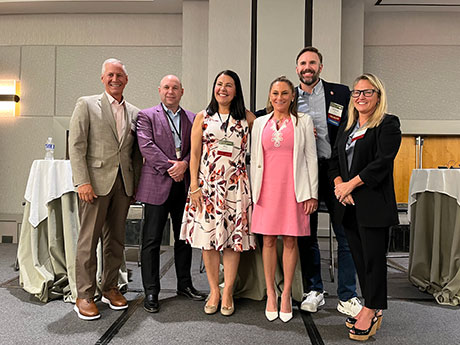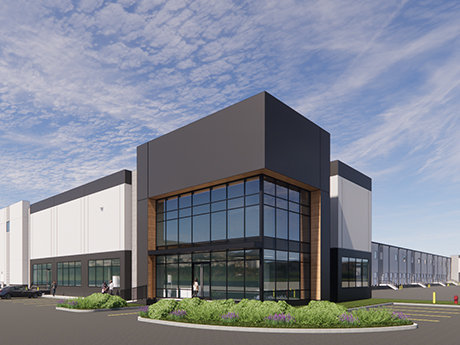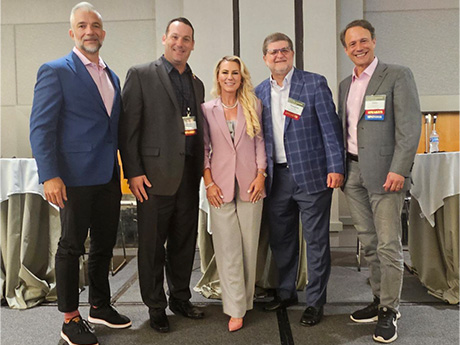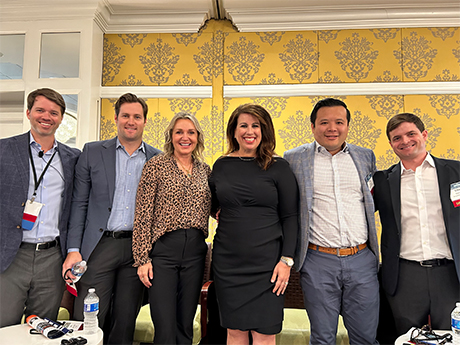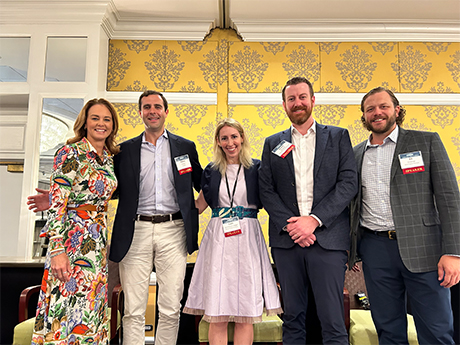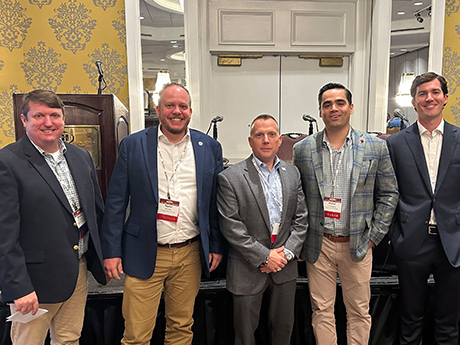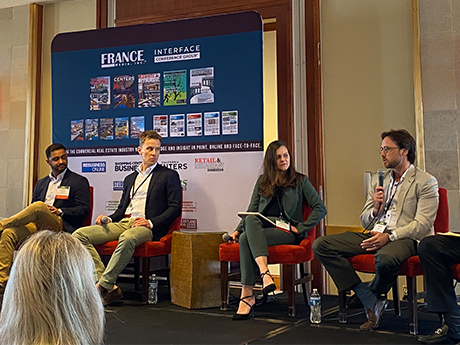By Taylor Williams DALLAS — It’s an exceptionally challenging time to be developing retail space in the metroplex. Pick your poison: Interest rates that have tripled in two years, restricted proceeds from lenders, longer entitlement and permitting times, limited land for new projects. Between all these barriers to growth, the deck is seemingly stacked against brick-and-mortar retail developers these days, despite the fact that in Dallas-Fort Worth (DFW), occupancy is very high and population growth shows little sign of slowing. Of course, each of those factors is exacerbated with large-scale developments. More land and rentable square footage require the raising of more debt and equity, which translates to heftier interest and dividend payments, respectively. If the site is an assemblage, then predevelopment is more time-consuming, and with the push outward to new suburban paths of growth, those sites may not already be zoned for retail. If rents aren’t trending upward, those factors alone can kill a project in its infancy. Editor’s note: InterFace Conference Group, a division of France Media Inc., produces networking and educational conferences for commercial real estate executives. To sign up for email announcements about specific events, visit www.interfaceconferencegroup.com/subscribe. For all these reasons, some owner-operators see opportunity in building smaller …
Conference Coverage
As a bridge lender across the full spectrum of seniors housing, Live Oak Bank has been able to capitalize on the limited liquidity in today’s market that has resulted in stalled transactions and refinancing challenges in this niche property sector. “Trust me, I have a certain advantage right now with the lack of lenders [active in the space], and I enjoy that because it enables me to be very strategic on relationships and the people that I choose to partner with and grow. But having liquidity back in our market is necessary for a healthy seniors sector,” believes Chad Borst, managing director of seniors housing at Live Oak Bank, headquartered in Wilmington, North Carolina. Editor’s note: InterFace Conference Group, a division of France Media Inc., produces networking and educational conferences for commercial real estate executives. To sign up for email announcements about specific events, visit www.interfaceconferencegroup.com/subscribe. Borst would like to see banks that moved to the sidelines in recent years due to the disruption in the capital markets return to the playing field. “I want the permanent financing market to open up more broadly. I want other banks to come back because it will help the overall health of our …
ATLANTA — Staffing, particularly at the regional director level, kicked off the discussion at the “Best in Class Operators’ Blueprints for Success in a Challenging Market” panel at the 11th annual InterFace Seniors Housing Southeast conference on Wednesday, Aug. 28 in Atlanta. Pilar Carvajal, founder and CEO of Innovation Senior Living, said her firm is focused on developing from within and rewarding those who have worked hard for the company. “We are keeping a very close focus internally. We think that’s where we will find our talent as we grow,” said Carvajal. Examples include developing the resident care director into an executive director or the executive director into a senior executive director who oversees more than one property. Joining Carvajal on the panel were Lindsey Hacker, executive vice president and CFO of Distinctive Living; Kristin Kutac Ward, co-CEO of AgeWell Solvere Living; Lou Maranto, senior vice president of sales for Discovery Senior Living; and Todd Filippone, president of SRI Management. Charles Mann, chief sales officer and co-founder of Accushield, a provider of security and entry management software for the industry, moderated the discussion. InterFace Conference Group, a division of France Media, hosted the event at the Westin Buckhead. “We’re constantly looking …
By Taylor Williams The meteoric rise of industrial real estate over the past decade will forever stand as one of the remarkable growth stories in the annals of commercial real estate, a quasi-rags-to-riches tale of an asset class that has become a preferred use for highly valuable sites and penetrated the portfolios of institutional-grade investors around the country. But after surging to all-time highs in the immediate post-COVID era, industrial rents have moderated in most major markets. Slowing rent growth has coincided almost perfectly with interest rate hikes, all while land and construction costs have continued to do what they always do: go up. For these reasons, industrial developers, who still overwhelmingly build on spec, tend to need a little more help these days than they did in recent years. Or in some cases, these developers may be perfectly well-capitalized to acquire land, secure financing and deliver buildings, but simply aren’t motivated to do so in the current financial environment. Enter incentives — of both the tangible and intangible variety — as the missing link that could mean the difference between a project being shelved or delayed and being executed. Incentives can take many forms, from tax breaks granted by …
Careful Balance of Business Fundamentals, Quality Care Is Key to Seniors Housing Success, Say InterFace Panelists
by John Nelson
By John Nelson Seniors housing is a sector that has a long track record of carefully balancing care for its residents with the fundamentals of real estate, namely the return on investment in the form of monthly rental rates. Equity and debt partners have appreciated the sector as an investment vehicle for decades, but are now fully grasping how important operators are to realizing those gains. This was the topic of discussion among the “power panel” of executives at InterFace Seniors Southeast, an annual conference that was held at Westin Buckhead Atlanta on Wednesday, Aug. 28. Panelists were asked by moderator John Lariccia, CEO and founder of WelcomeHome Software, to summarize the state of the seniors housing industry in a single word. Doug Schiffer, president and chief operating officer of Allegro Senior Living, selected “encouraged” as the best term to describe the current mood of the sector. “The encouragement comes into the fact that both versions of capital, whether it was equity or debt, have actually recognized now the importance of the operator,” said Schiffer. “For quite some time, it was about the importance of the real estate and how the buildings were designed, and then ‘we’ll go find an …
Build-to-RentConference CoverageFeaturesMultifamilyNorth CarolinaSingle-Family RentalSouth CarolinaSoutheastSoutheast Feature Archive
Build-to-Rent Sector Remains in a Sweet Spot, Say InterFace Panelists
by John Nelson
CHARLOTTE, N.C. — Build-to-rent (BTR), or purpose-built neighborhoods of single-family rental homes, has been an emerging subsector of the multifamily continuum the past several years. The housing type fills a niche for renters as it offers more living space and privacy than typical apartments, but is more affordable and amenitized than for-sale homes. The BTR sector began its ascent during the early years of the COVID-19 pandemic when a confluence of factors —the rise in work-from-home and hybrid work schedules, an increase in household formation of younger millennials, the desirability of more private space including garages and backyards — led to a sharp increase in demand for single-family rental (SFR) homes. Underpinning the increased demand for BTR living is the unaffordability of homeownership for a large swath of Americans. As of mid-year, home prices are now 47 percent higher than they were in early 2020, according to Harvard’s Joint Center for Housing Studies. Home insurance premiums have also risen aggressively in the recent past — up 21 percent between 2022 and 2023, according to the study. Meanwhile, mortgage payments are increasingly untenable as interest rates have also risen dramatically in recent years. For these reasons, institutional investors are actively participating …
Conference CoverageFeaturesMultifamilyNorth CarolinaSouth CarolinaSoutheastSoutheast Feature Archive
Multifamily Investors Need to Capitalize on ‘Golden Window’ to Buy Below Replacement Cost, Say InterFace Panelists
by John Nelson
The method to buy below replacement cost is a tried-and-true investment strategy among real estate investors that allows them to capitalize on short-term fluctuations in the market in order to lock in long-term value. Grant Russell, director of investments at AvalonBay Communities Inc., said that multifamily investors today are in a “golden window” because they can acquire a Class A property for less than what it costs to develop the same community from the ground-up, all things being held equal. “Deals are trading for higher than yesterday’s costs and below today’s costs; these are win-win transactions,” added Russell. “If a developer capitalized the deal a few years ago then they’re selling for a profit, and the buyer is able to acquire these deals for below today’s costs.” These win-win deals are becoming few and far between in today’s environment of elevated interest rates. While buyers are seeking strong yields in their investments, sellers are seeking profitability, and the middle ground has become narrower as those two motivations don’t overlap as often, especially compared to 24 to 36 months ago when interest rates were at historic lows. “In 2021-2022, properties were trading like commodities to some extent — they were two-year …
By Taylor Williams Within the world of multifamily development, the “amenities arms race” has become a well-documented trend over the past decade, a contest to curate and deliver the most appealing combination of entertainment and wellness features and activities to woo prospective renters. In many instances, this approach was successful, and developers succeeded in capturing the hearts and wallets of renters who sought an “everything under one roof” approach to renting. The fervent movement to deliver more extensive and impressive amenity packages also worked for much of the last decade because interest rates were dirt cheap, even though costs of materials and labor needed to install these features were perpetually on the rise. But today’s market is different. Developers not only face stubbornly high construction costs, but also significantly higher interest rates. Spreads on construction loans in particular tend to be higher than on permanent loans simply because this phase of the project life cycle carries the most risk. Unlike with other asset classes such as retail and industrial, where preleasing is often a prerequisite to securing construction debt, it’s exceedingly rare for renters to commit to units that are still two-plus years away from being delivered. The absence of …
Inland Ports Serve As Vital Link in Supply Chain for Industrial Users, Say InterFace Panelists
by John Nelson
CHARLOTTE, N.C. — Inland ports are a growing transportation option in the national supply chain. These facilities provide users — including automotive suppliers, retailers, manufacturers and agricultural producers — an option to import and export their wares to seaports via shipping containers by rail as opposed to trucking their products directly to a port terminal. One of the more prominent inland ports in the country is Inland Port Greer in Upstate South Carolina. The facility’s anchor client is BMW, which operates its mega manufacturing campus in nearby Spartanburg, S.C. Class I freight railroad operator Norfolk Southern Corp. provides rail services from the inland port to the Port of Charleston. Brian Gwin, senior industrial development manager for Norfolk Southern, said that when the railroad operator and the South Carolina Ports Authority (SCPA) established Inland Port Greer in 2013, it was apparent almost immediately that they had a behemoth on their hands. “We knew it was going to be mostly BMW, but we designed Inland Port Greer for 50,000 lifts a year,” said Gwin, referring to the number of shipping containers moved on or off Norfolk Southern trains at the inland port. According to multiple media outlets, the inland port exceeded 100,000 …
By Taylor Williams Industry professionals who hail from and work in San Antonio often describe the city’s economy and real estate scene as steady and healthy in a sort of unspectacular way. Rarely does any commercial sector in San Antonio achieve the high highs and low lows of gateway coastal markets. Further, the market’s quiet consistency has come to stand out as its neighbor up the road, Austin, has exploded as a tech hub in the past decade, bringing with it fervent building booms that still can’t put a dent in the skyrocketing cost of living. Yet this same quality that in years past caused major retailers and restaurants — and investors — to pass on San Antonio is now a primary force that attracts them to the Alamo City, at least according to some local industry experts. Some of these individuals elaborated on the trend at the inaugural InterFace San Antonio retail conference, which took place on April 4 at the Hilton Palacio Del Rio hotel. Bethany Babcock, principal and co-owner of full-service firm Foresite Commercial Real Estate, was the first industry expert who addressed the market’s evolution in the post-COVID era. “We noticed at the last couple trade …


